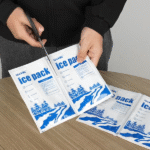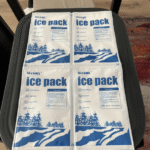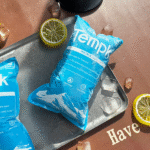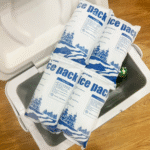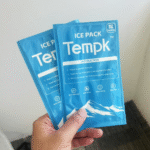Understanding the global cold chain means seeing how temperature controlled logistics keep perishable goods safe across continents. Di dalam 2025 the market is worth over USD 452 miliar and forecast to exceed USD 1.6 triliun sebesar 2033. That explosive growth reflects rising demand for fresh food, vaccines and biologics around the world. In this guide you’ll learn about market dynamics, technology innovations, Keberlanjutan, regional challenges and how to strengthen your own cold chain.
How big is the global cold chain market and where is it heading? You’ll see numbers from 2024 2034 and drivers like e commerce and pharmaceuticalsprecedenceresearch.com.
What technologies are redefining the cold chain? We explore AI, IoT, renewable energy and automation that improve visibility and reduce wastetrackonomy.ai.
How is sustainability shaping cold chain logistics? Discover new regulations, low GWP refrigerants and solar powered solutions.
What regional trends should you watch? From Asia Pacific’s rapid expansiongcca.org to the U.S. dan Eropa, we highlight capacity gaps, regulatory shifts and investment opportunitiesgcca.orggcca.org.
Apa yang baru 2025? Learn about cryogenic transport for biologics, plant based food logistics, blockchain contracts and data standardisationtrackonomy.ai.
Global Cold Chain Market: How Big Is It and What Drives Growth?
Market size and forecasts
The global cold chain market is surging. The Business Research Company reports that it grew from USD 405.02 miliar masuk 2024 ke USD 452.84 miliar masuk 2025, sebuah 11.8 % tingkat pertumbuhan tahunan gabungan (CAGR). Precedence Research estimates the market at USD 418.81 miliar masuk 2025, projecting it to reach about USD 1,416.67 miliar oleh 2034precedenceresearch.com. Grand View Research offers a similar forecast: the market could exceed USD 1.6 triliun sebesar 2033. Such variations arise from different methodologies, but all agree the industry will roughly triple by the early 2030s.
Why is it growing so fast? Key drivers include growing global population, rising incomes, urbanisation, expansion of e commerce and consumer demand for fresh and frozen foods. Pharmaceutical and biotechnology industries contribute as new vaccines and cell based therapies need ultra low temperaturestrackonomy.ai. The expansion of online grocery platforms in North America and Asia accelerates demand for refrigerated logisticstrackonomy.ai. Regions are investing in pre cooling facilities and modern storage to reduce losses and meet export standardsprecedenceresearch.com.
Market segmentation and key sectors
The cold chain isn’t monolithic—it spans multiple temperature zones and service types. Markets are typically segmented by melayani (angkutan, pergudangan, pemantauan, value added services), kisaran suhu (ambient, Dingin, didinginkan, beku, deep frozen) Dan end user (food manufacturers, Perusahaan Farmasi, supermarket). Misalnya, the fish, meat and seafood segment accounted for about 24 % pendapatan di dalam 2024precedenceresearch.com, while dairy and frozen desserts lead growth in Asia Pacificprecedenceresearch.com. Hardware remains dominant: sensor, reefers and control systems represented lebih 76 % of market share in 2022trackonomy.ai, highlighting the need for reliable equipment.
Factors limiting growth
Despite its momentum, the cold chain faces challenges. Infrastructure gaps are severe in developing regions; Asia Pacific’s cold storage capacity grew rapidly but remains far below developed economiesgcca.org. Ageing facilities—Japan reports that 33 % of its storage units are more than 40 tahungcca.org—need major upgrades. Geopolitical tensions increase energy and transport costs, while high environmental standards accelerate the phase out of hydrofluorocarbons (HFCs)maersk.com. Skilled labour shortages and complex regulations hinder cross border trade. Understanding these constraints is vital when planning expansion.
How Are Technology and Innovation Transforming the Global Cold Chain?
IoT and real time monitoring
Real time monitoring is the nervous system of modern cold chains. Sensor pintar, telematics and geofencing provide continuous data on temperature, kelembaban dan lokasi. Inbound Logistics notes that $2.7 trillion worth of temperature controlled goods were shipped by truck in 2022inboundlogistics.com and real time monitoring helps prevent spoilage and theft by triggering alerts when conditions deviateinboundlogistics.com. Hardware adoption is widespread: sensors accounted for 76.4 % of market share di dalam 2022trackonomy.ai. IoT platforms allow you to view shipments on a dashboard, receive alerts via mobile and share data with partners. Some systems even use machine learning algorithms to predict failures before they occur, enabling proactive maintenance and dispatching replacement vehicles.
Artificial intelligence and predictive analytics
AI takes monitoring data and turns it into actionable insights. Predictive analytics models can forecast temperature excursions, demand surges and equipment breakdowns, improving accuracy and reducing waste. StartUs Insights reports that from 2025 ke 2029 the global cold chain will generate lebih 26,800 new jobs and 2,800+ paten dengan 36.6 % growth in patents—a sign of rapid innovation. AI driven route optimisation helps carriers choose the fastest path, avoid traffic and reduce fuel consumption. Demand forecasting algorithms adjust inventory to minimise spoilage and stock outs. Di sektor farmasi, predictive models ensure biologics stay within narrow temperature bands, which is critical for cell based therapies projected to be 20 % of new drugstrackonomy.ai.
Blockchain and traceability
Blockchain technology enhances traceability and trust. Smart contracts automate payment release when conditions are met, while immutable ledgers store temperature records that regulators and partners can audit. This is particularly valuable in high stakes sectors like vaccines, where proof of compliance can expedite cross border clearance and reduce fraud. Some companies integrate blockchain with IoT sensors so that any excursion is recorded permanently, enabling faster recalls.
Otomasi dan robotika
Automation addresses labour shortages and boosts efficiency. Trackonomy notes that 80 % of warehouses are not yet automated, signalling huge potentialtrackonomy.ai. Robotics for picking, packing and sorting reduce human error and help maintain cold storage integrity. Robot bergerak otonom (AMR) can operate in cold rooms without fatigue; automated guided vehicles (AGV) move pallets, while robotic arms handle sensitive packages. According to Waggon, the equipment market for automation could reach USD 83.34 miliar oleh 2030. Adoption is rising in Europe and North America, where labour costs are high and regulatory pressure encourages efficiency.
Renewable energy and sustainable refrigeration
Sustainability is no longer optional. Reefer Van Network highlights that companies are switching to low GWP refrigerants, solar powered units and hybrid diesel electric refrigeration. Electric truck refrigeration units cut emissions and comply with emission caps. Waggon’s article describes how electric vehicles and solar powered cold storage can reduce greenhouse gases while saving energy costs. Solar costs between 3.2–15.5 cents per kWh compared with grid power at 13.1 cents, making renewable energy particularly attractive in remote areas. More facilities are adopting CO₂ and ammonia refrigerants; natural refrigerants meet or beat performance of synthetic HFCs with lower global warming potential.
Regional Trends and Challenges: Where Are the Gaps and Opportunities?
Asia Pasifik: Rapid growth and infrastructure gaps
Asia Pacific is the fastest growing region with a CAGR dari 29.6 % di antara 2017 Dan 2022gcca.org. Rising incomes, dietary shifts and e commerce are fueling demand for fresh fruits, seafood and vaccines. Australia increased its cold storage capacity from 8.4 ke 10.2 million m³ di antara 2020 Dan 2023 and its market is valued at about AUD 8 miliargcca.org. Yet per capita cold storage capacity remains far below the U.S. or Europe, leading to high food waste.
Japan faces a pressing need to modernise: 33 % of its cold facilities are over 40 tahungcca.org and high utilisation rates limit capacity for new entrants. Korea is grappling with oversupply and a shift toward natural refrigerants; new regulations will limit the global warming potential of refrigerants to 1,500 oleh 2028 Dan 750 oleh 2030gcca.org. Singapore’s market is expected to double by 2034 driven by population growth and cross border e commercegcca.org, while the Philippines is investing USD 53 juta masuk 2025 to build 100 cold storage facilitiesgcca.org. Indonesia is adopting solar panels and digital monitoring to cut logistics costs from 24 % ke 17 %gcca.org. These diverse conditions create opportunities for investment, infrastructure upgrades and technology adoption.
Amerika Utara dan Eropa: Mature markets facing sustainability mandates
North America and Europe have mature cold chains but still face challenges. Precedence Research says North America captured 36 % of market revenue in 2024precedenceresearch.com. Demand is driven by pharmaceuticals, frozen food and online grocery. Namun, ageing warehouses and strict environmental regulations necessitate upgrades. AS. cold chain market is forecast to mencapai Rp 416.09 miliar oleh 2034precedenceresearch.com, with investments shifting toward high efficiency facilities, automation and AI.
Europe focuses heavily on sustainability and decarbonisation. The phase out of HFC refrigerants and adoption of natural alternatives is mandated by EU F gas regulations. Many European operators are adopting electric truck refrigeration units and hybrid power systems, similar to Thermo King’s solutions launched in 2022. Partnerships with renewable energy providers and packaging suppliers help reduce carbon footprints and meet customer expectations for environmentally responsible products.
Amerika Latin, Middle East and Africa: Emerging markets with diverse needs
Latin America’s cold chain remains uneven. Countries like Brazil and Mexico have growing meat and produce exports but inadequate rural cold storage. Investments in infrastructure and digital monitoring are increasing, but regulatory frameworks are still developing. In the Middle East, the Gulf Cooperation Council (GCC) invests in modern distribution centers to support imported foods and pharmaceuticals; high ambient temperatures require robust refrigeration equipment. In Africa, the cold chain is nascent—lack of reliable electricity and limited road networks hinder growth. Solar powered storage and portable cooling units offer promising solutions. International development agencies are funding projects in East and West Africa to build cold stores for smallholder farmers, reducing post harvest losses and improving food security.
What Are the Key Components and Best Practices for a Resilient Cold Chain?
Temperature ranges and equipment
Your cold chain must accommodate different temperature regimes:
| Temperature Zone | Range (° C.) | Produk Khas | Your take away |
| Ambient/cool | 8–15 | Cokelat, anggur, some pharmaceuticals | Mild conditions that avoid heat spikes; use insulated containers and monitoring. |
| Didinginkan | 2–8 | Produk segar, susu, vaksin | Require continuous refrigeration; ensure quick loading and validated packaging. |
| Beku | –18 to –25 | Daging, hidangan laut, es krim | Goods are sensitive to defrosting; maintain strong insulation and avoid repeated door openings. |
| Deep frozen | Below –25 | Biologi, sperm, tissues | Use specialised freezers or cryogenic containers; continuous power is essential. |
Beyond temperature ranges, consider the core components of a cold chain: pre cooling, temperature controlled storage, transportasi berpendingin Dan pemantauan & kontrol. Pre cooling removes field heat from produce; insulated warehouses and temperature controlled vehicles preserve conditions; sensors and telematics provide end to end visibility. Regular calibration and maintenance ensure equipment meets regulatory standards.
Risk management and contingency planning
Develop contingency plans to handle power outages, mechanical failures and delays. The TempControlPack article emphasises backup generators, emergency response protocols and staff training. Evaluate your supply chain to identify single points of failure and create redundancies. For high value goods like vaccines, choose routes with reliable infrastructure and temperature controlled cross docking. Insure shipments appropriately and use tamper proof seals to deter theft. Digital twins—a virtual replica of your supply chain—can help model disruptions and test responses before real issues arise.
Studi kasus: CJ Logistics America
Di dalam 2023 CJ Logistics America opened a cold storage facility in Illinois with energy efficient refrigeration systems and IoT monitoring. It features real time temperature alerts, automated conveyor systems and renewable energy integration. The facility supports both retail and food service customers, demonstrating how integrated technology and sustainability can reduce costs and improve service. Companies worldwide can adopt similar practices to build resilient networks.
Kiat dan saran yang dapat ditindaklanjuti
Build an end to end digital chain: Use IoT sensors, telematics and AI analytics to monitor shipments from supplier to customer. Real time data reduces spoilage and supports compliance.
Berinvestasilah dalam pelatihan: Educate staff about temperature requirements, handling procedures and emergency protocols to minimise human error. Use simulation tools to train employees on potential disruptions.
Partner with specialists: Collaborate with third party logistics providers experienced in cold chain management. Outsourcing allows you to leverage dedicated fleets and warehousing while focusing on core competencies.
Evaluate packaging: Pilih isolasi, phase change materials or dry ice depending on the product and duration. Reusable containers reduce cost and waste in repeated shipments.
Contoh dunia nyata: A U.S. seafood exporter switched to IoT enabled containers and predictive analytics. Over six months, spoilage fell by 30 % and on time deliveries improved to 95 %. The company recovered its investment within a year through reduced waste and improved customer satisfaction.
What Innovations Will Shape the Future of the Global Cold Chain in 2025 dan seterusnya?
Cryogenic transport and biologics
The pharmaceutical sector drives demand for ultra low temperatures. Portable cryogenic freezers can maintain –80 °C hingga –150 °C for gene therapies and biologics. Cryogenic shipping lanes designed specifically for cell based products and mRNA vaccines are expanding; they include special handling protocols, redundant power supplies and dedicated customs processes. With the biologics market expected to reach USD 1,454 miliar oleh 2029trackonomy.ai, building cryogenic capacity will be a strategic priority.
Protein nabati dan alternatif
Plant based meat and dairy alternatives require different storage conditions compared with traditional meats. These products often need refrigeration but can be more sensitive to temperature fluctuations and light. Maersk notes that demand for plant based foods is skyrocketing and distribution networks must adaptmaersk.com. Expect growth in refrigerated last mile delivery and dedicated storage zones for plant based goods. Collaboration with producers on packaging innovations can enhance shelf life.
Smart packaging and sensors
Advances in packaging integrate sensors that monitor temperature, shock and humidity. Identiv and Tag N Trac announced a partnership in 2025 to develop smart BLE labels that provide real time visibility for pharmaceuticalsprecedenceresearch.com. These labels, which connect to cloud platforms, can be scanned with a smartphone or gateway to check condition and location. Similar innovations include time temperature indicators and radio frequency identification (RFID) tags that record temperature history, enabling automatic acceptance or rejection at receiving docks.
Data standardisation and collaboration
As supply chains become more interconnected, data standards are essential for interoperability. Trackonomy suggests that by 2025 74 % of logistics data will be standardisedtrackonomy.ai, allowing partners to share information seamlessly. Shared data platforms help align inventory, reduce duplicative shipments and support circular economy initiatives. Regulatory bodies may adopt universal temperature monitoring protocols, streamlining cross border trade.
2025 Perkembangan dan Tren Terkini
Tinjauan Tren
2025 will be a pivotal year for the global cold chain. The combination of surging demand, technological breakthroughs and sustainability pressures will reshape the landscape. Inilah yang perlu Anda ketahui.
Kemajuan terbaru sekilas
Perluasan infrastruktur rantai dingin: Governments and private companies are investing heavily in new facilities. Asia Pacific alone will add millions of cubic metres of cold storage capacitygcca.org.
Decarbonised refrigeration: Companies are rolling out electric truck units and hybrid systems to meet stricter emission standards. Sustainable packaging and solar powered warehouses reduce energy costs.
Integrated data platforms: Logistics providers are adopting integrated software for real time tracking, predictive analytics and blockchain validation. These platforms bridge gaps between shippers, carriers and end customers.
Wawasan pasar
The global cold chain is no longer a niche but a cornerstone of the worldwide food and pharmaceutical system. Market consolidation is expected as large logistics firms acquire smaller players to expand network coverage. According to StartUs Insights, lebih 2,800 paten Dan 26,800 pekerjaan will be created in cold chain technology between 2025 Dan 2029. Mergers and partnerships will focus on data analytics, packaging innovation and cross regional distribution. The push for sustainability will accelerate adoption of natural refrigerants, renewable energy and circular packaging. Regulatory bodies will tighten standards on refrigerants, waste and data transparency.
Pertanyaan yang sering diajukan
What does “global cold chain” mean? It refers to the worldwide network of refrigerated warehousing, transport and monitoring that keeps perishable goods within specified temperature limits from production to consumption. A robust global cold chain ensures food safety, vaccine efficacy and reduced waste.
Why is demand for cold chain services growing so fast? Rising incomes, urbanisation and the popularity of e commerce drive demand for fresh foods and convenient meal kits. Pharmaceutical innovation, including biologics and vaccines, requires stringent temperature control. Global trade and consumer expectations for year round availability of fruits and seafood also contribute.
How can small businesses access cold chain logistics? Many third party logistics providers offer shared warehousing and multi client transportation to reduce costs. Look for carriers with digital tracking, flexible shipping windows and experience in your product category. Local cooperatives and government programmes may subsidise cold storage for small farmers.
What role does sustainability play in the cold chain? Sustainability is central. The cold chain contributes about 2 % emisi CO₂ globaltrackonomy.ai. Using low GWP refrigerants, electric trucks, solar panels and recyclable packaging cuts environmental impact and complies with emerging regulations. Consumers increasingly prefer brands with strong sustainability credentials.
What are the biggest challenges in developing countries? Limited infrastructure, unreliable electricity, high capital costs and fragmented supply chains hinder cold chain growth. Capacity shortages lead to high food waste. Digital tools and renewable energy solutions can help leapfrog legacy systems, but investment and training are essential.
Ringkasan & Rekomendasi
The global cold chain is set to triple in value by the early 2030s, driven by demand for fresh food, pharmaceuticals and e commerce. Rapid adoption of IoT, Ai, blockchain and automation will improve visibility and efficiencytrackonomy.ai. Sustainability pressures are pushing companies toward electric vehicles, low GWP refrigerants and renewable energy. Regional disparities offer opportunities for investment: Asia Pacific needs capacity, Europe is modernising, and emerging markets require off grid solutionsgcca.orggcca.org.
Langkah-langkah tindakan:
Invest in digital monitoring: Implement IoT sensors and AI analytics to gain end to end visibility and predict disruptions.
Tingkatkan infrastruktur: Retrofit ageing warehouses with energy efficient refrigeration and natural refrigerants; expand capacity in high growth regions.
Prioritaskan keberlanjutan: Transition to electric or hybrid refrigeration units, adopt renewable energy and explore reusable packaging.
Collaborate across the chain: Share data with suppliers, carriers and customers via standardised platforms; participate in industry alliances to shape regulations and best practices.
Plan for extreme conditions: Kembangkan rencana darurat, secure reliable power sources and train staff to handle emergencies in both developed and emerging markets.
Tentang tempk
Pada Tempk, we specialise in connected cold chain solutions that help you monitor, manage and optimise your temperature sensitive logistics. Our sensors, gateways and analytics platform provide real time visibility, while our sustainable refrigeration units reduce energy costs and emissions. We collaborate with manufacturers, food producers and pharmaceutical firms around the world to design resilient, future ready cold chains.
Let’s keep your goods safe and your business ahead: Contact us to discuss your challenges, request a free consultation or test our remote monitoring tools. Together we can create a healthier, more sustainable global cold chain.
















